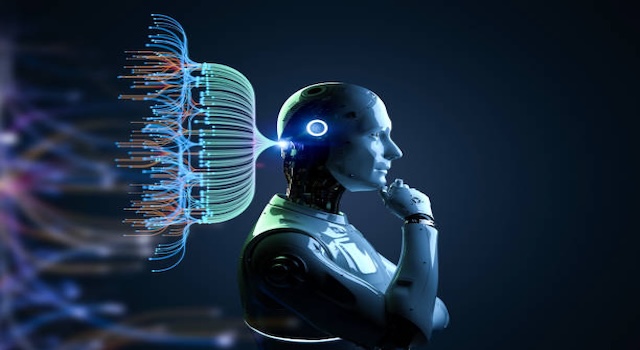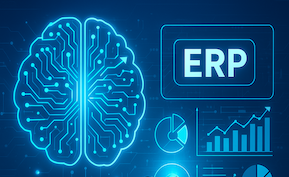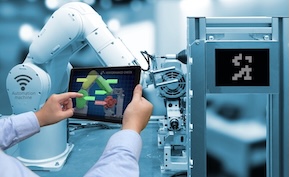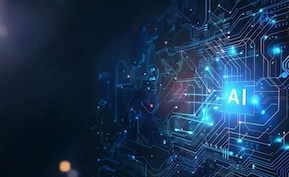Artificial Intelligence
The AI Operating System: How Agentic Platforms Will Redefine Enterprise Software Architecture

Agentic AI is rapidly evolving beyond a toolset—it’s becoming the foundation of a new kind of enterprise operating system. This AI Operating System (AI OS) doesn’t just run applications; it orchestrates them, coordinating data, logic, and decision-making across every layer of the business. The result? A continuously learning, self-optimizing enterprise that functions as an intelligent, adaptive organism.
From static software stacks to intelligent operating systems
Traditional enterprise architectures were built for control—data silos, monolithic apps, and linear processes. But modern enterprises operate in dynamic environments where adaptability and intelligence are the new competitive advantages. Agentic AI transforms the old stack into a flexible, modular operating system capable of reasoning, learning, and coordinating at scale.
- Legacy model: Hierarchical systems, human-managed integration, rule-based automation.
- AI OS model: Agent-driven architecture with real-time decision-making, autonomous coordination, and adaptive logic.
Core layers of the Agentic AI Operating System
- Data orchestration layer: Integrates structured and unstructured data sources into unified streams for AI processing.
- Agent layer: Hosts autonomous and semi-autonomous agents capable of decision-making and task execution.
- Cognitive control layer: Governs how agents reason, interact, and prioritize actions across systems.
- Governance & ethics layer: Enforces transparency, compliance, and auditability within autonomous operations.
- Experience layer: Translates AI insights into user-facing dashboards, assistants, and applications.
How agentic AI redefines enterprise architecture
Instead of isolated systems connected by middleware, the AI OS uses intelligence as connective tissue. Every software module—from CRM and ERP to analytics—becomes part of a living network coordinated by autonomous agents.
- Dynamic orchestration: Agents allocate compute, data, and human resources in real time.
- Contextual intelligence: Each decision is informed by organizational goals and global context.
- Emergent optimization: Agents collectively learn patterns that enhance system-wide efficiency.
- Unified observability: Every action, human or machine, is logged and explainable.
Example: AI OS in action
Imagine an enterprise where a finance agent monitors cash flow, a supply chain agent anticipates shortages, and a customer service agent predicts demand. Each interacts autonomously—but they share data and context through the same operating system. When raw material prices rise, the AI OS automatically triggers procurement adjustments, updates forecasts, and alerts sales to adjust pricing strategies—all in real time.
Key technologies powering the AI Operating System
- Multi-agent frameworks: Platforms like LangChain, CrewAI, and AutoGen enable coordinated AI reasoning.
- Unified data fabrics: Tools like Databricks, Snowflake, and Google BigQuery centralize access for real-time learning.
- AI orchestration layers: Systems like OpenAI Assistants API, Microsoft Copilot Stack, and IBM watsonx coordinate agentic behavior.
- Event-driven microservices: Architectures based on Kafka, EventBridge, and Temporal allow responsive system integration.
- Governance platforms: IBM watsonx.governance, Azure Purview, and DataRobot Trust Layer ensure compliance and transparency.
Economic and operational impact
As enterprises adopt agentic operating systems, they unlock new forms of agility and efficiency:
- Cost compression: Reduced need for manual coordination and redundant software tools.
- Operational resilience: AI agents dynamically reroute workflows during disruptions.
- Data liquidity: Information flows freely across systems, enabling faster insights.
- Adaptive scaling: Resources adjust automatically to business demand or AI-driven forecasts.
Challenges in deploying an AI OS
- Interoperability complexity: Integrating legacy systems into agentic architectures can require extensive refactoring.
- Governance maturity: Enterprises must define oversight for autonomous agents acting across departments.
- Ethical uncertainty: Determining accountability for agentic decisions remains a challenge.
- Skill gaps: Teams need cross-functional expertise in data engineering, AI governance, and cognitive architecture.
Steps to build your enterprise AI OS
- Assess readiness: Evaluate your data maturity, integration capabilities, and governance policies.
- Establish the core data layer: Implement a data mesh or lakehouse to unify access across applications.
- Deploy pilot agents: Start with task-specific agents that connect existing software stacks.
- Implement orchestration tools: Introduce agent scheduling, event routing, and reasoning frameworks.
- Expand to full autonomy: Scale from individual agent automation to coordinated multi-agent ecosystems.
KPIs for measuring AI OS maturity
- Autonomous orchestration rate: % of workflows coordinated by AI agents.
- System adaptability index: Speed of response to business or environmental change.
- Integration coverage: Number of connected systems within the agentic framework.
- Governance audit pass rate: Percentage of AI decisions meeting compliance standards.
FAQs
What is an AI Operating System? An AI Operating System is a unified framework of agentic AI, data, and automation layers that coordinate enterprise processes autonomously.
How is an AI OS different from traditional ERP or CRM systems? Unlike static applications, an AI OS connects and orchestrates multiple systems dynamically using autonomous agents.
Can legacy enterprises adopt an AI OS? Yes. With APIs, data fabrics, and governance frameworks, legacy systems can integrate into AI-driven architectures incrementally.
What are the benefits of an AI OS? It improves agility, reduces operational friction, enhances decision speed, and builds enterprise resilience through autonomy.
Bottom line
Agentic AI is the next evolution of enterprise software architecture. As enterprises adopt AI operating systems, they’ll move from managing workflows to orchestrating intelligence—creating organizations that are not just automated, but adaptive, anticipatory, and truly autonomous.
Continue reading: AI-Driven Enterprise Architecture Trends to Watch in 2026.






